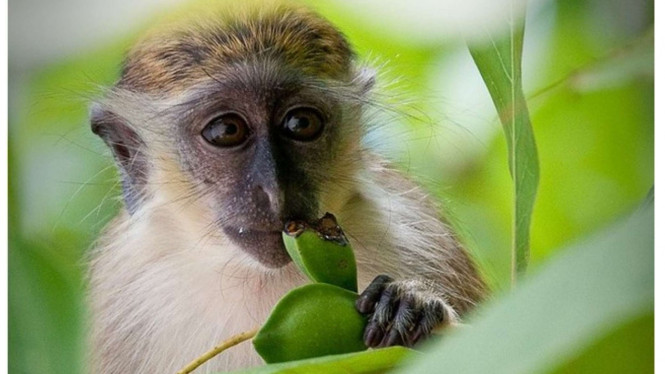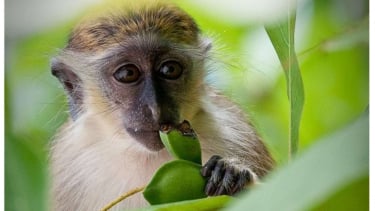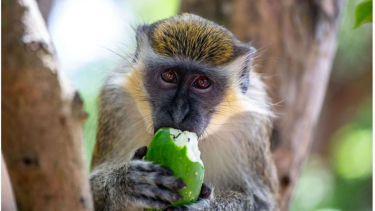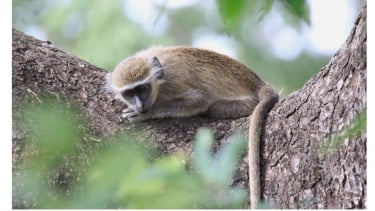- flickr
VIVA – The green monkey also known as the Sabaeus monkey. This animal was found in Senegal, West Africa and from the Gambia to the Volta River. They are given the name Green Monkey because of the green color in their golden fur. The Green Monkey is a highly targeted species because these primate monkey can live in groups with a prominent social structure.
Their habitat has suffered significant damage and although the species is least considered by the IUCN, their populations are showing a declining trend. They belong to the genus Chlorocebus, and sometimes all seven members of this genus are considered a single species, Chlorocebus aethiops. Here are the facts about the most expensive animal in the world, Green Monkey:
1. Facts about Habitat and Lifestyle
Monyet Hijau atau Green Monkey
- flickr
Green Monkeys are very social animals, living in groups of 20 - 50 animals. Like most other monkeys, this group has stable and temporary members. The nucleus of each group consists of many families, which in turn consist of adult females who are closely related to their offspring.
Green Monkey mostly eats fruits, flowers, seeds, pods, leaves, grass, and roots. Occasionally, birds, eggs, small reptiles, and insects. Green monkeys are generally terrestrial but sometimes sleep in trees. In addition, they are known to seek shelter in trees when threatened.
2. Facts about the Nutrition
Monyet Hijau atau Green Monkey
- flickr
The Green Monkey Face has a dark blue hairless face bordered by a soft white fur line.
According to kidadl.com, they are known to have a long, slender semi-prehensile tail. Males have a prominent red penis and light blue scrotum, and hence their overall appearance can be described as red, white, and blue.
Green Monkeys exhibit sexual dimorphism. Males weigh 8.6-17.6 lb (3.9-8 kg), while females weigh 7.5-11.7 lb (3.4-5 kg). Also, males are 1.4-2 feet (42-60 cm) long, and females are 1-1.6 feet (30-49 cm) long.
This animal has pale hands and feet. The tip of the tail is golden yellow. The back of the thighs and cheek whiskers are also golden yellow. Green Monkeys are seen mostly on all four limbs, on the ground, as well as on tree tops and branches.
3. Facts about Dominance Hierarchy
Green Monkey
- Success Story
Green Monkey has a type of social hierarchy that arises when members of a social group interact, often aggressively, to create a ranking system. In social living groups, members are likely to compete for access to limited resources and mating opportunities.
According to animalia.bio, when reaching maturity, the male monkey leaves to join other groups, while the female monkey continues to live with their birth groups. When trying to join a new group, these male monkeys often face aggression from their members. Therefore, they prefer to hang out with their peers or maternal siblings. Male monkeys often move between groups several times throughout their lives.
4. Facts about the Green Monkey’s Disease
Reported from primatespark.com, the Green Monkey viral disease is caused by the Marburg virus; When infected in humans it causes fatal diseases such as VHF, dengue fever, dengue fever, viral hemorrhagic fever, viral hemorrhagic fever.
5. Facts about Green Monkeys Appearance
Monyet Hijau atau Green Monkey.
- flickr
Green monkeys look very similar to the other species that make up the Chlorocebus genus; however, there are some key differences that make them easily distinguishable from these other species.
The whiskers around their chin are also heavily set with yellow. They don’t have a particularly distinct white brow, but a paler and more yellow brow than other Chlorocebus members.
Green monkey have black faces with deep red-brown eyes and dark, square ears. The backs of their hands and feet are gray and their tails a yellowish-gray with a golden tip. Males monkeys are easily identified by their pale blue scrotums, the shade of which may change with the male’s age and rank in the group.































